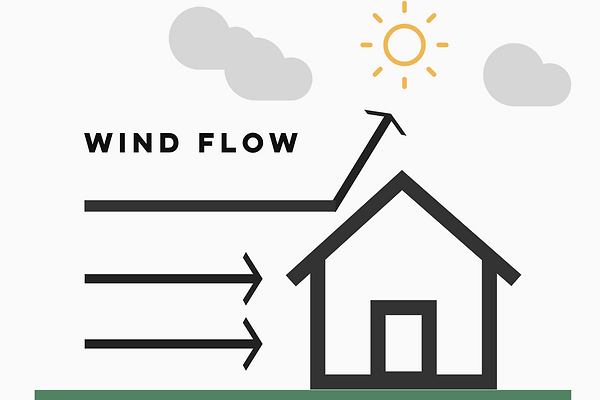Home/ Roof Design Pressures
Related: Commercial Roof/ Residential Roof/ Resources/ About Us
Roof design pressure refers to the force exerted by wind on a building's roof, and it is an important consideration in the design and construction of structures to ensure their safety and stability. This pressure is typically measured in pounds per square foot (psf) or pascals (Pa) and is influenced by various factors such as wind speed, building height, terrain, and local topography.
Designers and engineers use wind tunnel testing, computational fluid dynamics (CFD), and other methods to calculate and analyze the effects of wind on a building's roof. The goal is to determine the maximum pressure that the roof is likely to experience during extreme weather conditions, such as storms or hurricanes.
Roof design pressure is crucial for selecting appropriate building materials, designing structural elements, and ensuring that the entire structure can withstand the forces imposed by the wind. Building codes and standards often provide guidelines and requirements for calculating and incorporating roof design pressure into the overall structural design of buildings.
Understanding and accounting for roof design pressure is crucial for several reasons:
-
Structural Integrity: Wind forces, especially during storms and hurricanes, can exert significant pressure on a building's roof. Failing to design for these forces may lead to structural damage or even collapse, posing serious safety risks.
-
Building Safety: Ensuring that a building can withstand the forces exerted by wind is essential for the safety of its occupants. Adequate design measures help prevent roof failure, reducing the likelihood of injuries or fatalities during extreme weather events.
-
Code Compliance: Building codes and standards often include specific requirements related to wind loads and roof design pressure. Compliance with these codes is mandatory for construction projects, and failure to adhere to them may result in legal and regulatory issues.
-
Property Protection: A well-designed and wind-resistant roof helps protect the building and its contents from damage. Adequate measures can prevent water intrusion, which could lead to further issues such as mold growth and degradation of building materials.
-
Insurance Considerations: Insurance companies often take into account the structural integrity of a building when determining coverage and premiums. Buildings designed to withstand wind forces may be considered lower risk, potentially leading to more favorable insurance terms.
-
Resilience Against Natural Disasters: Buildings located in areas prone to hurricanes, tornadoes, or other severe weather events need to be resilient to these natural disasters. Properly accounting for roof design pressure is a key aspect of creating structures that can withstand such challenges.
-
Long-Term Durability: Designing for wind loads not only addresses immediate safety concerns but also contributes to the long-term durability of the building. Resilient structures are better equipped to withstand the test of time and a variety of environmental conditions.
In summary, considering roof design pressure is fundamental to creating safe, durable, and resilient structures that can withstand the forces of nature, especially in regions prone to severe weather events. It is a critical aspect of responsible and effective engineering and construction practices.


Metal Roof
A metal roof is a roofing system made from metal panels characterized by its high resistance, impermeability and longevity. A metal roof panel is made of materials such as zinc, copper and steel alloys.



